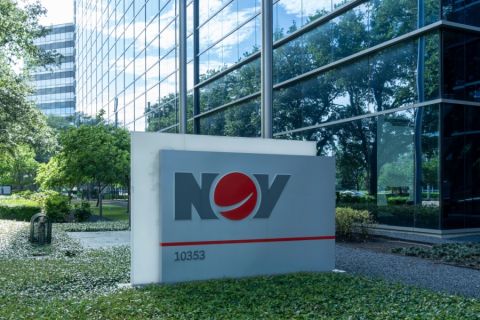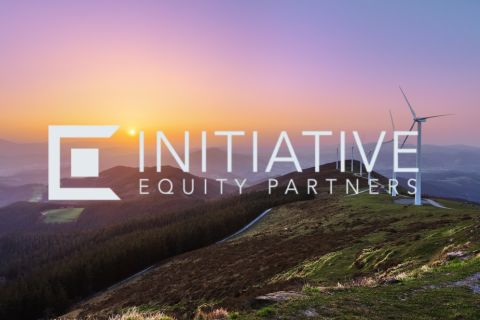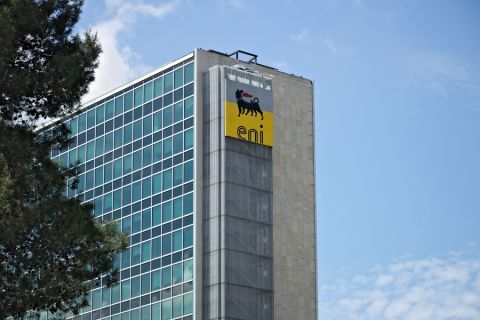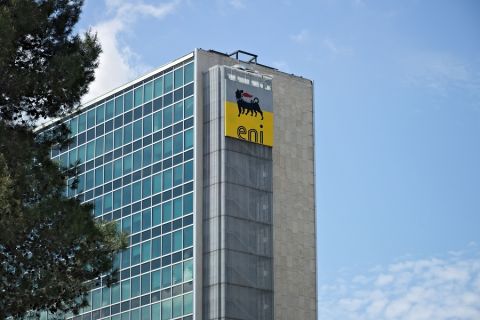Deon Daugherty, editor-in-chief, Hart Energy: I'm Deon Daugherty, editor-in-chief of Oil & Gas Investor magazine, here in Irving, Texas with Rich Dealy, CEO of Pioneer Natural Resources at the headquarters. And today we're doing the January 2024 edition of the OGInterview. Rich, thanks so much for being with us today.
Rich Dealy, CEO, Pioneer Natural Resources: Deon, my pleasure. Thanks for having me.
DD: Okay, let's hit, first of all, the elephant in the room.
RD: Sure.
DD: The $60 billion megamerger between Exxon Mobil and Pioneer Natural Resources just as you're coming in to be CEO of Pioneer Natural Resources. So, what's next for you?
RD: I've had that question asked to me a lot over the last few months, and I'd say I'm not really focused on what's next for me. I'm really focused on what's happening here at Pioneer, and really making sure that we execute our program until it closes. I mean, as we know, we don't know what that timeline looks like exactly. And so my job is to make sure that we continue to execute, and then really work with Exxon to plan the transition so when closing does occur, that we have a seamless transition, and with the integrated teams work well together. And then the other thing is to really work with our 2,000 employees, and make sure they have great opportunities at Exxon, and make sure that we put these two companies together, and execute in a seamless way is what investors expect us to do.
DD: So, you're leading the transition. What goes into leading a transition of this size?
RD: It's really just putting the right teams together throughout the organization, and making sure that they're sharing information in a way that allows people to figure out what's the best way to do this. I mean, clearly, Exxon's a $400 plus billion dollars entity. We're a $60 billion entity. They have assets around the world. We have assets in the Permian Basin. And so it's how do we kind of bring those together, take the best of both worlds, and figure out what's the right way to integrate these two teams that we can execute in the best way. And they recognize that we do some things better than they do. We recognize they do some things better than us, and how do we take the best of both worlds, and do that? And I think it's really one of those things of why it was a compelling transaction.
When we look at it from an investor standpoint, I mean, it's our chance for our investors to, essentially, own 12% of a large diversified oil and gas company, one of the best in the world, that has great opportunities around the world. They pick up tremendous assets that Pioneer had, in terms of our acreage position, and our 2,000 talented employees. And we're going to pick up their technology. They have a huge lab in Houston that we don't invest money in today that we'll be able to take advantage of across our acreage. And really with the intent of how do we improve recoveries, how do we get more oil out of the ground, how do we take that and use that for national security? And really that's one of the key benefits of it. Plus I think when you look at the benefits of the transaction, I mean they're going to be able to reduce emissions faster than we were on the path to do to bring those emissions down from 2050 that we'd committed to 2035 is what they've committed to 2030 on their own assets.
You think about our employees, I mean, we've been told different numbers, but roughly 65,000 people employed by Exxon, our 2,000, I mean, they have global operations. So, anybody that has that aspiration to do a lot of different challenging things around the world, they're going to have tremendous opportunities at Exxon. And so we think that's a huge benefit for our employees. And so our goal with that transition is put all that together, and give those opportunities to our employees, but also execute at a very high level.
DD: Surely a big part of the appeal of Pioneer for any company in the industry is your shale position in the Permian. Where do you see the runway, though, for shale going forward? There's been lots of prognosticating on its lifespan, what it's got left. What do you think?
RD: Well, I think human ingenuity is a wonderful thing. And I think you've seen that even in 2023, U.S. production was a lot higher than people anticipated. I mean, if you look at where the EIA had coming out of last year at 12.4 million barrels a day today we're at 13.2, call it 800,000 barrels a day of incremental oil production. I think coming into the year, most people thought that'd be around four to 500,000 barrels a day. So, I never want to undersell what the capabilities. When I think about shale, particularly, I'm going to talk Permian, because that's where we know the most. We talked about, and I talked about this in a number of speeches last year, that we see the Permian Basin growing to about 7 million barrels a day from the 5.6 million where we started this year at, call it six million, or so barrels a day today.
We think that'll happen by the end of this decade, and then it'll be flat for a number of years after that, significant number of years probably. And that's without any incremental enhanced oil recovery, down spacing, technology changes. I mean, we're only getting eight to 10% of the oil out of the ground. And so there's a vast resource there that still yet to figure out technology-wise, how do we get that out of the ground? So, I think shale has a long run, particularly, in the Permian. When think about the other basins in the U.S, I mean, I was surprised that... We thought most of them would be flat this year. Bakken, Eagle Ford were both up. Gulf of Mexico was up, then they make up really the difference of what the Permian didn't make up for the 800,000. The Permian was basically 400,000, or so, and the rest was those three other areas. So, my anticipation is those will remain flat for the next decade, or so, and then start to decline.
So, I'd say we've still got a lot of running room in the U.S., and I think that's good for national security. It's good for our allies that a lot of that oil is going to be producing in the U.S. It's the cleanest from their mission standpoint. So, I just think all those things are advantages that not only this transaction, but the U.S. has just given our abundance resource.
DD: Something that's made Pioneer one of the most compelling companies in the industry, frankly, is the firm's willingness under Scott Sheffield's leadership, yours, and I'm sure there's others been involved, to really be a first mover on calling out its peers, and itself, its performance. Flaring, Pioneer got out first. I made a list aligning executive compensation with your shareholders' interest, cutting executive salaries, or reducing executive salaries during the pandemic, and then establishing a variable dividend. I mean, were these tough decisions to make, because they were kind of maverick moves that you just don't see others doing.
RD: I don't know if they were tough. I think it's part of being a leadership role in the industry is really saying, where's the world going, and how can we contribute to that, and how do we make ourselves better, and push ourselves to be better on all those fronts? And so I think on the emission side, I mean the Permian Basin had a flaring issue in 2019, and before it was growing rapidly. Infrastructure wasn't there. And so there was reasons why it was, but I think putting people on notice that, hey, here's what that looks like allowed all of us to get better. I mean, to the industry's credit, the amount of the reduction that's happened in flaring, the Permian Basin has been dramatic since 2019. And everybody should be rewarded, or recognized for the contributions they've made, and how far we've come. And with a short period of time, that doesn't mean we're going to stop here because we're all interested in figuring out how do we get better.
And technology is helping. Sensors, and things of that that we didn't have that technology in 2019 has advanced. And so it just allows us to track that stuff even better today. And so just empowering ourselves, and we've got basically methane monitors at all of our gas facilities out there that we're monitoring. And we will now know when we have a leak that we can detect it, because we want to fix it, we want to capture that gas, we want to sell it, versus having it be in our emissions. So, I think all those things are things that leaders do. I think about the capital framework of the company. I mean, the world at the time of 2020, 21 didn't need the Permian Basin growing at 15%, 20% per year. So, we had to kind of reassess what made sense. Plus, when you look at the industry back then, and really we looked at the 10 years prior to that time period, our returns were dismal.
I mean, they were basically, return on capital employed was essentially 2% for the industry, us included. And we said that needed to change. And so we had a campaign that Scott, and our lead of our board, myself, and our head of IR, went, and talked to our shareholders, and really said, "How do we need to evolve this?" That's really where the returning more free cash flow to shareholders having a stronger dividend, how the variable dividend there are returning 75% of our free cash flow back there. And then it really worked out even better than we thought it was in terms of where we could drive costs to get to only basically in 2022, I guess it was, only 30% was reinvested back into growing at roughly 5%. The rest was able to be... 75% of that would be able to return to shareholders. So, I think those are the things that companies do, and leaders do.
They listen to their shareholders, they're owners of the company, but we also dig what's happening in the world around us, and say, "How do we force ourselves to get better?" And it's a journey. It's not something that we're going to fix in one day. But I think the industry, and Pioneer included, has done a great job of advancing that, and getting up that curve, and being a leader in lowering our emissions footprint, and making it a cleaner product. Now, long term, I still believe that we're going to need all sources of energy.
It's not as if I'm just focused on oil and gas. I think when you think about the world, and Arjun Murti with Veriten talks about the 1.4 billion [people] club, which is basically China, India, Africa, Southeast Asia, all have populations that are growing to about 1.4 billion. And they all use a fraction of what the developed world use of oil, or energy, and just in general, they're all going to want to improve their standard of living, and it's going to take energy of all sources. So, whether it's renewables, whether it's nuclear, whether it's oil, and gas, hydrogen, whatever. I'm a proponent of all those things. I think our job is that we produce oil and gas. How do we make it as clean as we can, as low cost and reliable to help the rest of the world along with the U.S. have a low cost, reliable fuel and energy.
DD: Fantastic insight. Thank you so much, Rich.
RD: My pleasure.
DD: And thank you for joining us for this edition of the OGInterview with Pioneer CEO Rich Dealey. I'm Deon Daugherty, editor-in-chief for Oil & Gas Investor.
Recommended Reading
Keeping it Simple: Antero Stays on Profitable Course in 1Q
2024-04-26 - Bucking trend, Antero Resources posted a slight increase in natural gas production as other companies curtailed production.
NOV Announces $1B Repurchase Program, Ups Dividend
2024-04-26 - NOV expects to increase its quarterly cash dividend on its common stock by 50% to $0.075 per share from $0.05 per share.
Initiative Equity Partners Acquires Equity in Renewable Firm ArtIn Energy
2024-04-26 - Initiative Equity Partners is taking steps to accelerate deployment of renewable energy globally, including in North America.
Repsol to Drop Marcellus Rig in June
2024-04-26 - Spain’s Repsol plans to drop its Marcellus Shale rig in June and reduce capex in the play due to the current U.S. gas price environment, CEO Josu Jon Imaz told analysts during a quarterly webcast.
Ithaca Deal ‘Ticks All the Boxes,’ Eni’s CFO Says
2024-04-26 - Eni’s deal to acquire Ithaca Energy marks a “strategic move to significantly strengthen its presence” on the U.K. Continental Shelf and “ticks all of the boxes” for the Italian energy company.





